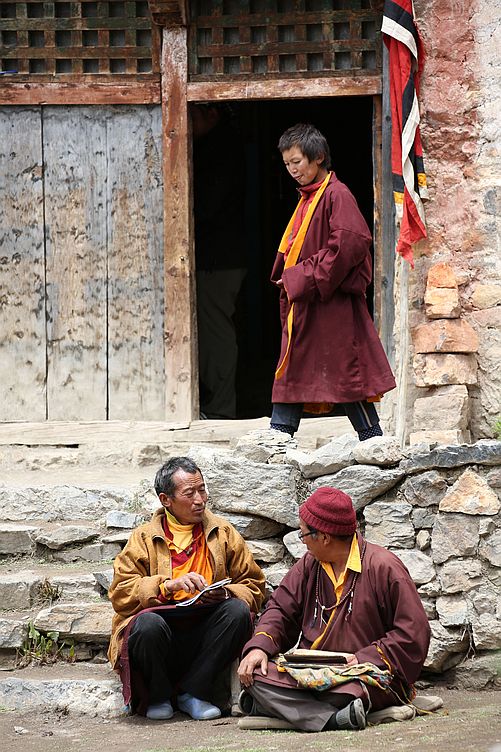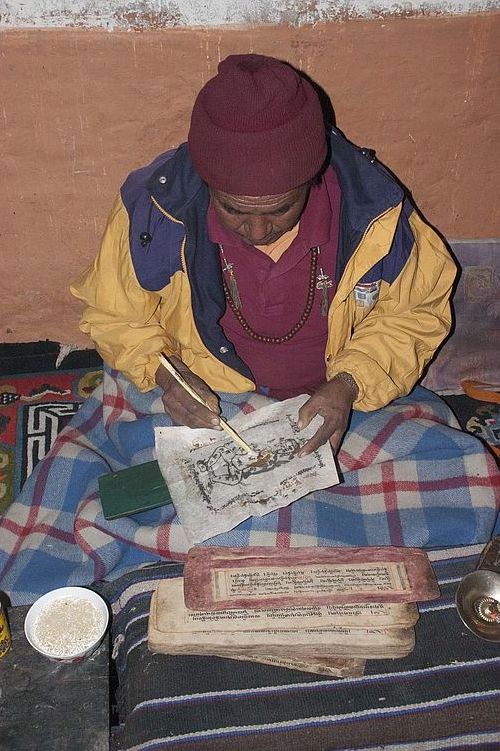
| PL |
Background

Regarded by Tibetans as the indigenous religion of their land, Bön is in fact an amalgam of several elements, including Indian Buddhism and a range of indigenous traditions. The oldest and most distinctive stratum is to be found in the narrative sections (called smrang) of its ritual texts, and in its mythic corpus. Since this stratum has no parallel in Buddhism (except in ‘indigenised’ Buddhist works), it is also the least understood. Today, monastic Bön is flourishing both in Tibet and in the South Asian diaspora (and now also in the West).
The texts that form the basis of Bönpo rituals contain many archaisms and other obscurities, and since (contrary to the case of Tibetan Buddhism) they have no Indian antecedents, clues to solving these issues can be addressed only with reference to Bönpo ritual texts in other parts of the Tibetan cultural world (mainly north India and the China’s Gansu province). While Buddhism has a long and widespread tradition of xylographic textual reproduction in Tibet, this has not been the case with Bön, which has always favoured the use of manuscripts (partly, no doubt, because of the lack of the substantial patronage that would have been required to produce the carved blocks).
Many, if not most, of the manuscripts in the Drangsong collection are components of rituals concerned with providing protection, expelling physical or supernatural afflictions, and generating prosperity and well-being. These are the kinds of rituals for which there is understandably the greatest demand in daily life, and while they do not feature very prominently in the more salvation-oriented setting of monasteries, they are still widely practised by hereditary lamas in village communities. As part of a long-term project in the framework of a collaboration between The Kalpa Group (Switzerland) and the Centre for Research on East Asian Civilisations (CRCAO, Paris), Charles Ramble has directed the production of video documentation of numerous rituals within these categories. The project has entailed photographing, transcribing and translating a large number of texts, mainly from South Mustang, relating to some of the rituals – part of a living tradition – that are to be found in the Drangsong collection. Descriptions of these rituals, along with presentation of the relevant texts and links to the corresponding ritual performances can be found on the website www.kalpa-bon.com.
In view of the fact that manuscripts, and not merely the texts that they support, are an inalienable part of the Bön ritual tradition, we propose to conduct a systematic study of Drangsong manuscripts to further our understanding of this cultural complex. There is compelling evidence to suggest that Bön has developed a distinctive manuscript tradition that transcends regional and historical peculiarities. Most obviously, this is to be found in the use of certain abbreviations, scripts, symbols and other features that occur rarely or not at all in Buddhist texts. It is certain that some exorcistic rituals require the use of paper, ink and styli made from special ingredients and according to precise dimensions, but the degree to which a similar distinctiveness extends to Bönpo manuscripts more widely remains to be determined.


HOME | INTRODUCTION | FORMAT AND LAYOUT | PROVENANCE STUDY | PEOPLE | NEWS